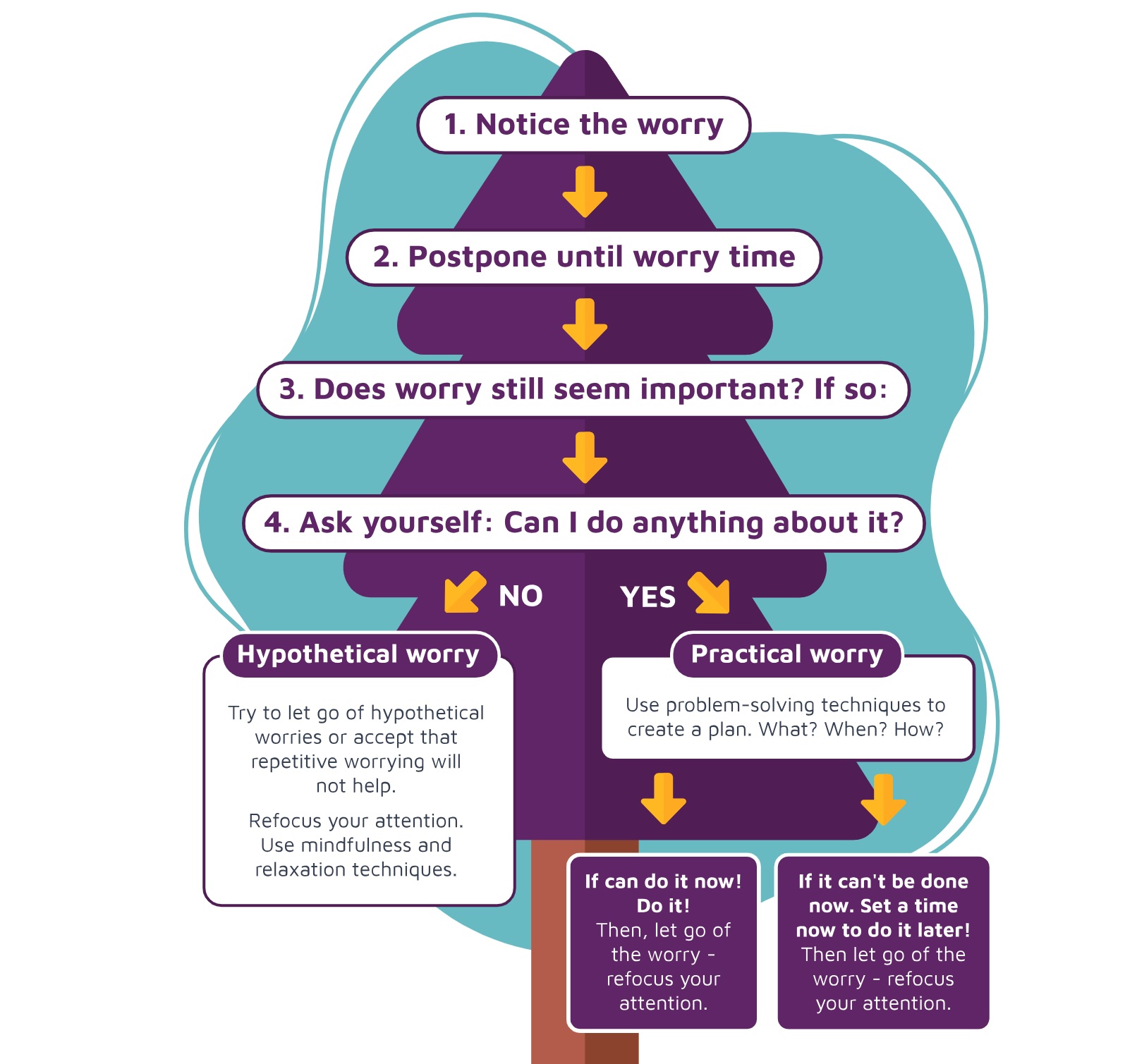Manage your stress - Worrying with problem solving
Research shows that people with sleep problems do not have more problems than people without sleep problems, but just spend more time worrying about their problems.
Worries are thoughts set in motion by “what if…?” questions. They usually involve a chain of ideas, such as “What if my boss wants to fire me?” or “If I lose my job, I won’t be able to keep my home, and if I lose my home, my partner will leave me”. It is these “what if…” questions that cause the most anxiety and large amounts of time get spent worrying about things that probably won’t even happen.
Similar to mind tricks, worrying in bed can also become associated with your sleep habits, teaching your brain that the bed is a place to worry, and consequently preventing you from sleeping efficiently. Whether excessive or realistic, worry is hardly ever a productive endeavour. First, worry tends to involve uncontrolled mental activity. That is, we do it even at times when we would rather not. Secondly, worry involves emotional distress that serves as an obstacle to good and pragmatic problem-solving. Rather than thinking clearly about the problem and generating realistic solutions, when we worry, we tend to focus only on how bad the situation is.
At the same time, completely eliminating worry may not be realistic, but the skills needed to manage worry and decrease its impact on sleep can be learned. So if you are the type of person who lies in bed with thoughts racing through your head about things you have to do, problems you are facing, or events that could happen, you might benefit from an effective problem solving skill: the “worry tree” technique.
The “worry tree” technique involves having a scheduled worry time everyday for a period of 10-15 minutes well before your wind down, during which we deal with the problems and concerns we have so we don’t have to do so at bedtime. The goal of the worry time is to limit worry to a specific period of the day, to have consistent time each day to think about things that are concerning and to develop productive ways of thinking about and dealing with them.

- When you notice a worry in your mind that is outside of your worry time, log them in a journal or phone to get to it when your allocated “worry time” arrives.
- Begin your worry time by finding a quiet place to sit in which you can avoid interruptions. Make sure this is well before your bedtime.
- As you sit and relax, first check your phone or journal for worries noted down outside of your worry time. “Do they still seem important?” If so, write them down along with other worries or concern that comes into your mind. Do not limit yourself to only the “big” worries, include little concerns or “silly” worries as well. At this point it is best to just write down everything that is on your mind.
- When you have exhausted your mind of all worries, categorise them into ‘hypothetical’ and ‘practical’ worry. Hypothetical worries are future based worries, based on situations or circumstances that may or may not happen. Focusing on these worries is unhelpful because due to their speculative nature, we aren’t in a position to do anything about them at that moment. Problem-based worries are here and now based worries that can be managed by finding and implementing a solution.
- Once your worries are grouped, we would like you to focus on the problem-based worries. Next, order them with the bigger concerns being number one and so on down to the last. If ranking them is too difficult, you may find it easier to organise them into groups based on their importance, such as “Big Concerns”, “Medium Concerns,” and “Small Concerns.”
- Once your worries are grouped or ranked by importance, starting with the biggest concern, we’ll start implementing the SOLVED problem solving technique (next section).
If the problem is something you have absolutely no control over, write down things you can do to help yourself not to become overly stressed about this situation. For example you can use some of the relaxation techniques we learnt last week (week 4).
Remember, when worries come outside of the worry time, use the worry tree technique and wait until your scheduled worry time. Practice daily for the next week. After a few days, see if you notice a reduction in your night-time worry.
Your content here
